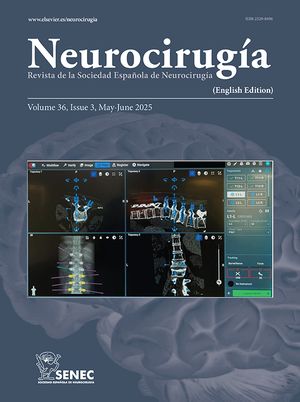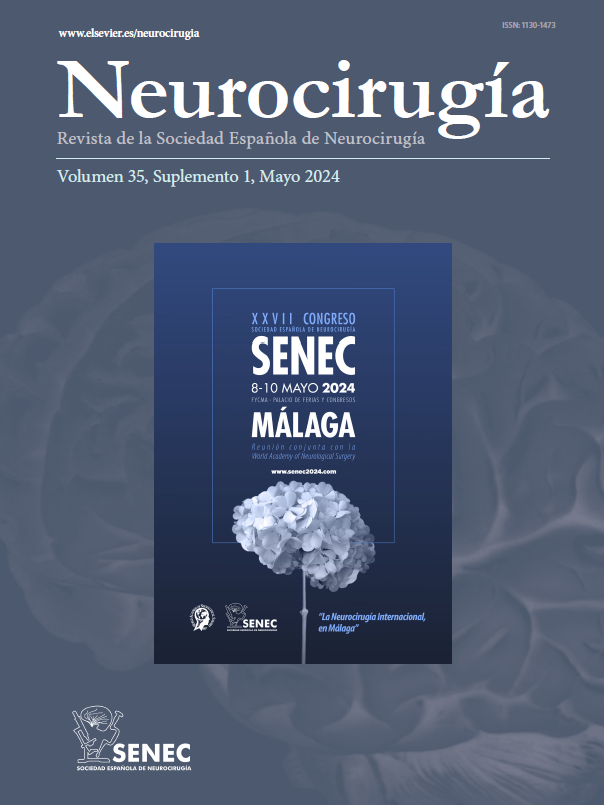Sellar and parasellar tumors are frequent lesions in neurosurgical practice, highlighting pituitary adenomas, craniopharyngiomas, and sellar tubercle meningiomas. The clinical manifestations are similar, however; There are imaging aspects that differentiate them.
ObjectiveShow imaging aspects of tumors in the sellar and parasellar region that guide their histopathological diagnosis.
MethodA descriptive, longitudinal and prospective study was carried out that included 200 patients from the Hermanos Ameijeiras Hospital, of which 120 had a histopathological diagnosis of pituitary adenoma, 50 of craniopharyngioma and 30 of sellar tubercle meningioma. The variations in the displacement of the point of the anterior communicating arterial complex and in the premammillary angle were analyzed by means of a cerebral nuclear magnetic resonance study. For data analysis, absolute and relative frequencies were used as summary measures.
ResultsA cephalic displacement of the anterior communicating arterial complex was evident in the craniopharyngiomas, of 10–11.9 mm (84.0 %); in pituitary macroadenomas, 12−14 mm (78.3%); and in sellar tubercle meningioma, ≥14 (86.6 %) mm. When evaluating the premammillary angle, pituitary adenomas were identified between 85º and 95º (73.3 %); in craniopharyngiomas, <85º (90.0 %); and in meningiomas of the sellar tubercle, between 85 and 95º (86.6 %).
ConclusionsThe present study allows us to identify imaging characteristics in sellar and parasellar tumors that guide with high certainty the histopathological diagnosis and thus establish a more effective treatment.
Los tumores selares y paraselares constituyes lesiones frecuentes en la práctica neuroquirúrgica, destacan los adenomas hipofisiarios, craneofaringiomas y los meningiomas del tubérculo selar. Las manifestaciones clínicas son similares, sin embargo; existen aspectos imagenológicos que los diferencian.
ObjetivoMostrar aspectos imagenológicos de los tumores de la región selar y paraselar que orienten a su diagnóstico histopatológico.
MétodoSe realizó un estudio descriptivo, longitudinal y prospectivo que incluyó a 200 pacientes del Hospital Hermanos Ameijeiras, de ellos 120 con diagnóstico histopatológico de adenoma hipofisiario, 50 de craneofaringioma y 30 de meningioma del tubérculo selar. Se analizó mediante estudio de resonancia magnética nuclear cerebral las variaciones en el desplazamiento del punto del complejo arterial comunicante anterior y en el ángulo premamilar. Para el análisis de los datos se utilizaron frecuencias absolutas y relativas como medidas resumen.
ResultadosSe evidenció un desplazamiento cefálico del complejo arterial comunicante anterior en los craneofaringiomas, de 10–11,9 mm (84,0 %); en los macroadenomas hipofisarios, de 12−14 mm (78,3 %); y en los meningioma del tubérculo selar, ≥14 mm (86,6 %). Al evaluar el ángulo premamilar se identificó en los adenomas hipofisarios, entre 85º–95º (73,3 %); en los craneofaringiomas, <85º (90,0 %); y en los meningiomas del tubérculo selar, entre 85–95º (86,6 %).
ConclusionesEl presente estudio permite identificar características imagenológicas en tumores selares y paraselares que orienten con elevada certeza al diagnóstico histopatológico y con ello instaurar un tratamiento más efectivo.
Article

If it is the first time you have accessed you can obtain your credentials by contacting Elsevier Spain in suscripciones@elsevier.com or by calling our Customer Service at902 88 87 40 if you are calling from Spain or at +34 932 418 800 (from 9 to 18h., GMT + 1) if you are calling outside of Spain.
If you already have your login data, please click here .
If you have forgotten your password you can you can recover it by clicking here and selecting the option ¿I have forgotten my password¿.











